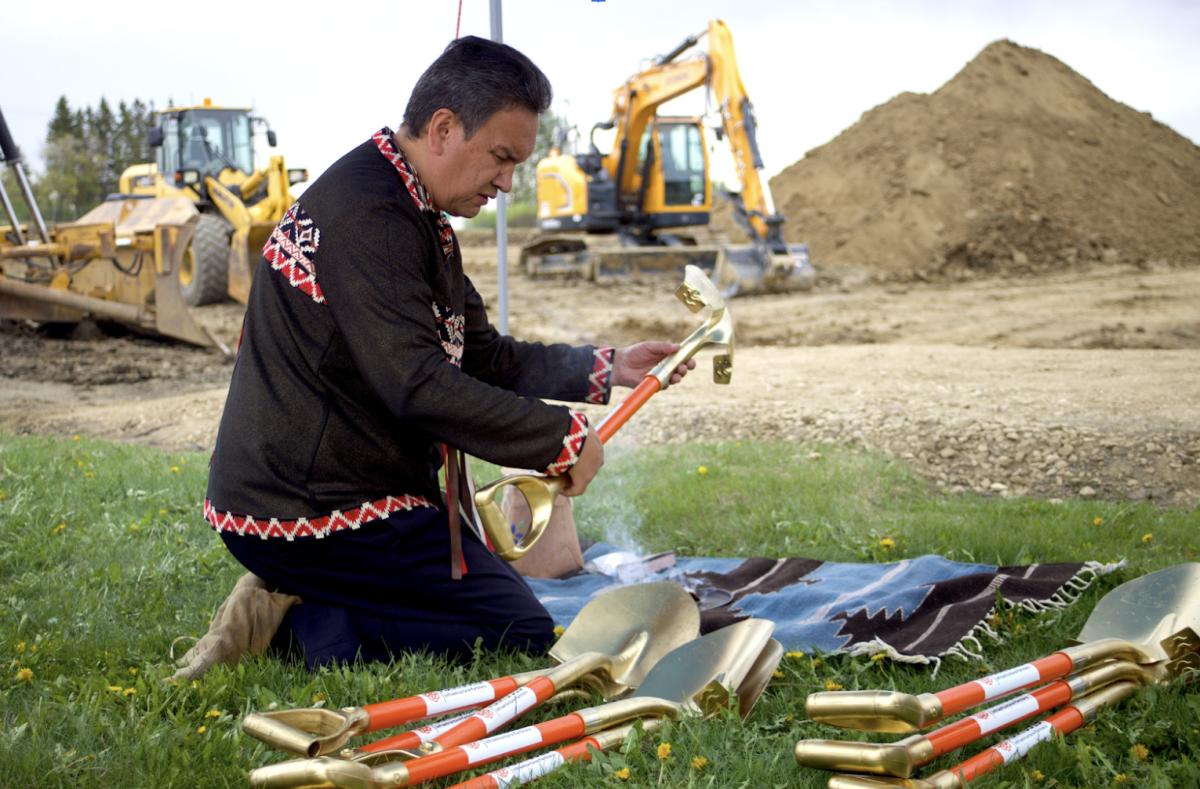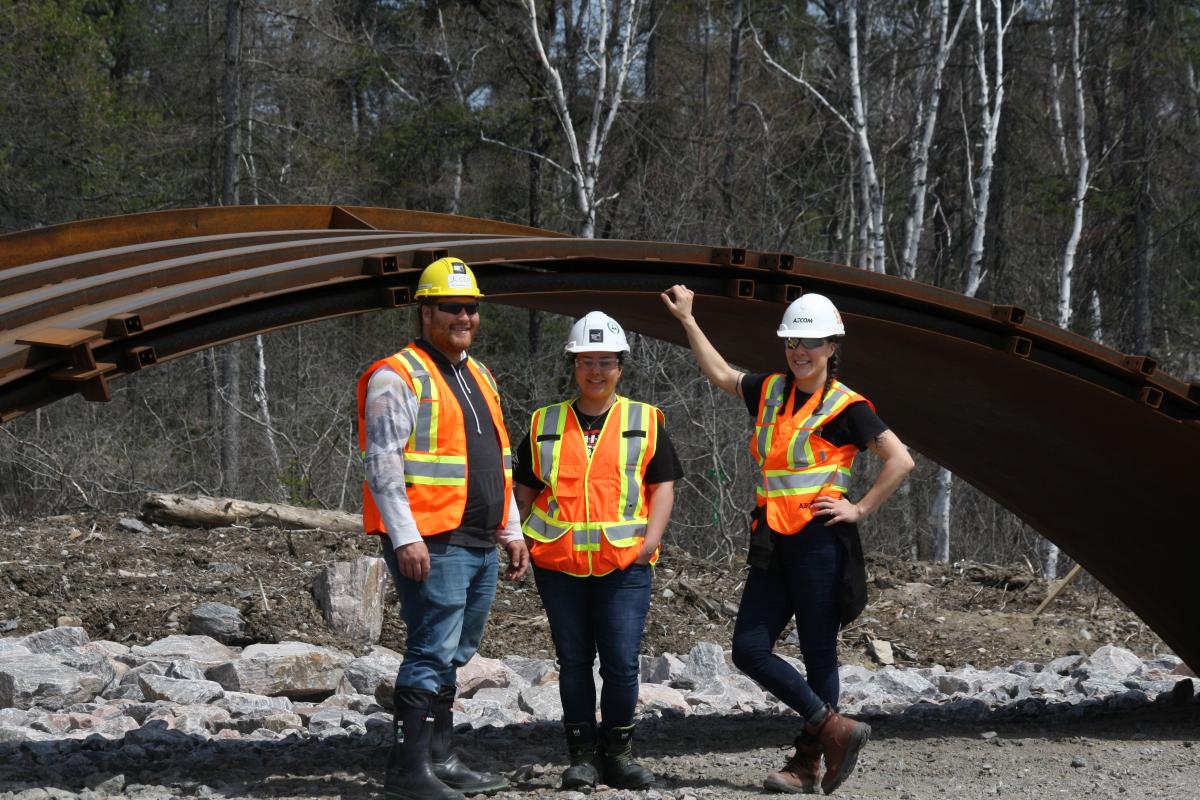By Jennifer Ashawasegai-Pereira, Indigenous Reconciliation Advisor, AECOM
Strong Indigenous relations can make a project sing. Those relations must start early on in any development process though to be successful. Indigenous liaisons and engagement specialists are also key in building rapport with Indigenous communities. These are, in part, important pieces to achieving reconciliation in Canada.
At AECOM, we are committed to a journey of reconciliation and meaningful Indigenous engagement on projects. We are a proud member of the Canadian Council for Aboriginal Business (CCAB) and are invested in its Progressive Aboriginal Relations (PAR) program. We have implemented a PAR taskforce that, along with our Human Resources team, has developed a National Indigenous Policy to promote a national approach to how we interact with Indigenous communities. The policy also encourages Indigenous participation in all our operations, along with support requirements for an increasing level of Indigenous engagement.
Effective engagement at work
Our transportation team has delivered numerous projects throughout the country with strong Indigenous participation. The Edmonton Valley Line Light Rail Transit (ELRT) project in Alberta is an example of excellent communication and engagement with Indigenous communities. As Owner’s Engineer, AECOM built and led the team that developed all reference design and procurement documents for the 13km ELRT system through a public-private partnership contract. The new street level system is urban-friendly and offers public transit for the first time to southeast Edmonton.
Marcel Pelletier, Vice President Indigenous Relations at AECOM, was the Indigenous Advisor for this transformational project. Pelletier (Anishinaabe) recognized that Indigenous engagement with the 31 affected Nations was very important to the project because of its Treaty 6 location. “It was imperative that we communicate developments in the project schedules all the way along. The main reason is because transparency was an important part of the project’s success, but more importantly, the reconciliation was vital,” said Pelletier. “This was a part of the City of Edmonton’s commitment to reconciliation and AECOM’s commitment to work with Indigenous communities.” Along with the Indigenous participation plan, our team was rounded out by four Indigenous employees.
 |
 |
| Marcel Pelletier, Vice President Indigenous Relations smudging shovels before groundbreaking ceremony on the Edmonton Valley Line LRT | Jennifer Ashawasegei-Pereira (far right) on Henvey Inlet Wind Power Project construction site |
As a further demonstration of our commitment to reconciliation, AECOM implemented a Canada Socioeconomic Engagement and Reconciliation Plan in 2020. As a corporate citizen, we committed to doing our part with respect to Call to Action 92, Business and Reconciliation of the Truth and Reconciliation Commission’s (TRC) Calls to Action. The plan includes four pillars of Indigenous engagement:
These pillars were a natural part of the ELRT project where a traditional ceremony attended by dignitaries from all levels of government was held before breaking ground. Edmonton Mayor Amerjeet Sohi, Alberta Minister of Transportation Rajan Sawhney and federal counterpart Minister of Tourism Randy Boissonnault all participated in the ceremony which included opening remarks from Pelletier and Enoch Cree Nation Elder Walter White, a renowned and respected member of Treaty 6.
Nyden IronNighttraveller (Cree), Indigenous Engagement Specialist at AECOM, helped coordinate a monitoring program for 17 Treaty 6 First Nation communities impacted by the ELRT. Although 31 First Nations were engaged on the project, only 17 of them chose to participate in the monitoring program to ensure any archeological findings were handled in a culturally appropriate way. From August 2021 to February 2022, communities were invited to send up to four participants for one-week rotations to monitor construction activity.
“Meaningful engagement and effective monitoring ensured cultural protocols were honoured” said IronNighttraveller. “We had an incident that sent our response plan and its associated procedures into action when remains were found on site. Although these turned out to be deer remains, it was a great exercise where proper procedures were executed and a community Elder was on hand to provide guidance as needed.” IronNighttraveller added that community monitors are looking forward to participating in future rotations on the project.
Heading east to Ontario, AECOM provided contract administration on a large stretch of highway construction in the province. The nearly 15 kilometer, four-lane expansion of Highway 69 in Robinson Huron Treaty was in the traditional territory of Henvey Inlet First Nation (HIFN). This five-year project started in the summer of 2016. In addition to sub-contracting opportunities, Indigenous engagement on this project included hiring a First Nation Community Liaison along with hiring, training and mentoring three local Anishinabek on their path to obtain licenses as junior highway inspectors.
As AECOM’s First Nation Community Liaison on the project, I ensured HIFN concerns were addressed and that lines of communication remained open between the project team and the community. One of their key concerns surrounded blasting near the community. Even though it was within the provincial legislation, the blasting was not acceptable to community. To mitigate, two blasting monitors were installed in the community and another was installed on the project site to record and report on blasts. Schedules were also posted in public areas and construction update newsletters were provided to make community residents aware of all blasting activity.
Learning, Working and Living. Together.
Among our many initiatives in Canada, we are very proud of AECOM’s Indigenous Blooming New Graduate Program. With a focus on mentorship, experience and inspiration, the program is shaped to help youth reach their full potential through personal and professional support and guidance. Students are identified and tracked based on their interest within fields of engineering, science, business, economic development and environment - all AECOM umbrella professions and key components of our successful project delivery. Upon completion of the program, our new graduate students become stewards for youth and other community members interested in our Indigenous Blooming experience and pursuing a career in our industry.
Our Indigenous-led engagement practice is not limited to Canada. As a global company, AECOM acknowledges and respects the rights of Indigenous Peoples as defined in the United Nations Declaration on the Rights of Indigenous Peoples, their unique connection to the land and water and the role reconciliation plays in building strong relationships around the world.
Learn more about our Indigenous Relations Practice.